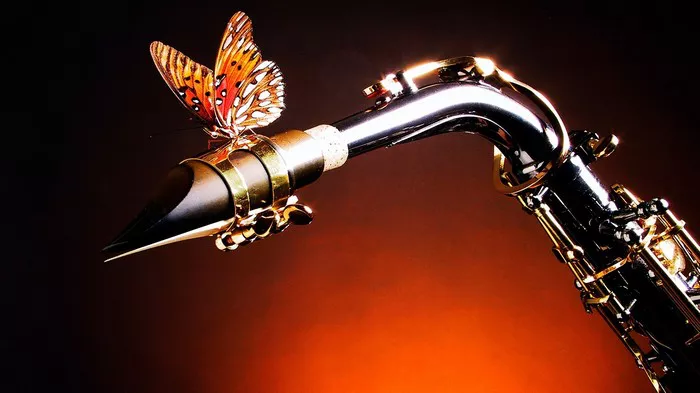The world of musical instruments is a rich and diverse one, with each instrument contributing its unique timbre and character to the symphony of sounds that compose music. Among these instruments, the Eb alto saxophone stands as an embodiment of elegance and versatility. In this comprehensive guide, we will delve into the captivating realm of the Eb alto saxophone, exploring its history, characteristics, and the pivotal role it plays in various musical genres.
Eb Alto Saxophone History
The saxophone family, created by the Belgian instrument maker Adolphe Sax in the early 1840s, includes a range of instruments varying in size and pitch. The Eb alto saxophone is one of the most popular and frequently encountered members of this family. Its name derives from its transposing nature, as it is pitched in Eb, a minor sixth above the written music.
Originally, the saxophone was intended to fill the gap between the brass and woodwind sections of military bands, offering a unique tonal quality that blended well with both. The saxophone’s journey from military bands to a prominent position in classical, jazz, and contemporary music is a testament to its adaptability and allure.
What are the main features of Eb alto saxophone?
The Eb alto saxophone boasts a set of distinct features that contribute to its charm and versatility:
1. Size and Shape:
The Eb alto saxophone is a moderately sized instrument, approximately 24 inches long with its characteristic S-shaped neck. This shape allows for a comfortable playing posture and easy access to the instrument’s keys.
2. Material:
Most modern Eb alto saxophones are constructed from brass, although variations made from other materials such as bronze or silver can also be found. The choice of material influences the saxophone’s tone and projection.
3. Range:
The Eb alto saxophone has a range spanning approximately two and a half octaves, making it capable of producing a wide array of musical notes. This range allows saxophonists to perform a broad spectrum of musical styles and genres.
4. Mouthpiece and Reeds:
The mouthpiece and reed combination is crucial to the saxophone’s sound production. Saxophonists can experiment with various mouthpiece designs and reed strengths to achieve their desired tone and playability.
Musical Versatility
One of the key reasons for the Eb alto saxophone’s enduring popularity is its remarkable versatility in both classical and contemporary music genres:
1. Classical Music:
In the realm of classical music, the Eb alto saxophone has found a place in various contexts, including orchestras, wind ensembles, and chamber music. Composers like Alexander Glazunov and Jacques Ibert have incorporated the instrument into their compositions, adding a unique color to classical compositions.
2. Jazz:
The Eb alto saxophone is perhaps most famously associated with jazz music. Jazz legends such as Charlie Parker, John Coltrane, and Cannonball Adderley have elevated the saxophone to iconic status in the jazz world. Its sultry, expressive tones and ability to convey emotion make it an indispensable instrument in jazz ensembles.
3. Popular Music:
The Eb alto saxophone also shines in the realm of popular music, adding a touch of sophistication and nostalgia to various genres. From rock ‘n’ roll to funk and R&B, saxophonists like Clarence Clemons of the E Street Band and David Sanborn have left an indelible mark on popular music.
Playing the Eb Alto Saxophone
Playing the Eb alto saxophone requires dedication, practice, and a good understanding of the instrument’s mechanics. Here are some key points for aspiring saxophonists:
1. Proper Embouchure:
Developing the correct embouchure, which involves the position and control of the lips and facial muscles, is crucial for achieving a good tone on the saxophone.
2. Finger Technique:
Mastery of fingerings and key combinations is essential for fluid and expressive playing. Regular practice and finger exercises can improve agility and precision.
3. Breath Control:
Controlling your breath is paramount in producing a consistent and rich sound. Learning to regulate your airflow and breathing patterns is vital for saxophone performance.
4. Repertoire:
To become a proficient saxophonist, it’s essential to explore a diverse repertoire. Practice scales, etudes, and a variety of musical styles to develop your skills and broaden your musical horizons.
See Also: The Lifespan of a Saxophone Reed: A Comprehensive Guide
Conclusion
In conclusion, the Eb alto saxophone is a captivating instrument with a rich history and a bright future in the world of music. Its unique characteristics, versatility, and ability to convey emotions make it a favorite among musicians and audiences alike. Whether in the hands of a classical virtuoso, a jazz improviser, or a pop icon, the Eb alto saxophone continues to enchant listeners and enrich the world of music with its soulful and expressive voice. Embracing the Eb alto saxophone is an invitation to explore a world of musical possibilities and a journey into the heart of melodic expression.


